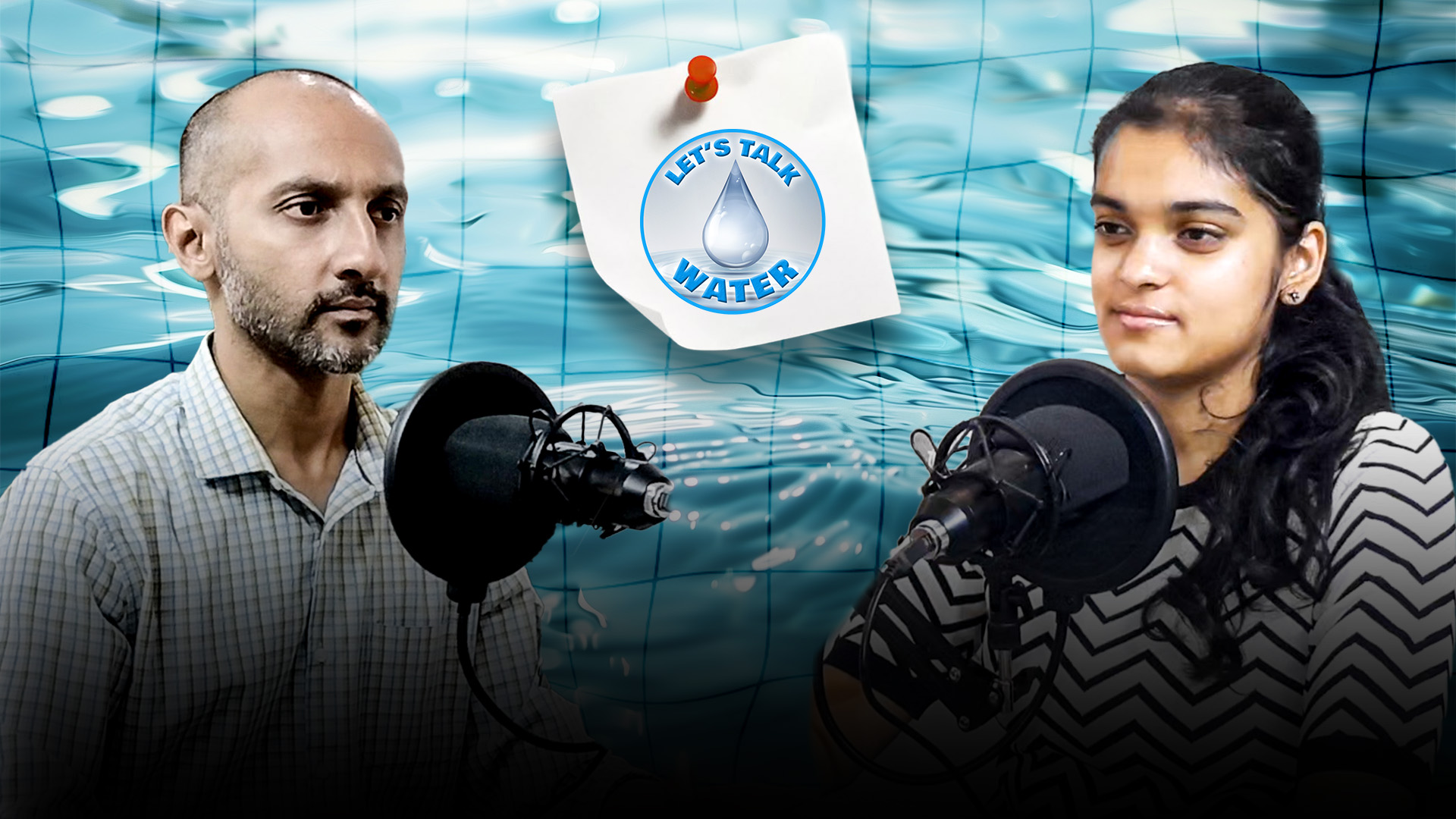Aadya turned concern into action during a city-wide water crisis in 8th grade, launching a homegrown innovation after witnessing water tankers flood streets without any lasting solution in sight
Published Jun 08, 2025 | 8:00 AM ⚊ Updated Jun 08, 2025 | 8:00 AM

Let's Talk Water: 16-year-old innovator Aadya Kanchan talks urgency, action & her solution
Synopsis: On Let’s Talk Water, 16-year-old Aadya Kanchan delivers a compelling call to rethink our relationship with water. Speaking with host Nolan Pinto, she stresses that mindset shifts—treating water like currency—can spark real change. Passionate and insightful, Aadya emphasises awareness as the key to sustainable action, inspiring listeners to recognise water’s true value in both policy and daily life.
On the latest episode of Let’s Talk Water, a powerful voice emerged not from a scientist or seasoned policymaker, but from a 16-year-old changemaker—Aadya Kanchan. Passionate, clear-eyed, and deeply rooted in environmental empathy, Aadya spoke with host Nolan Pinto about the urgency of rethinking how we value water—and what she’s doing about it.
“Water is such a vital resource. It is literally the start of life. Ancient civilizations have started on water,” Aadya says with conviction. “If we start treating water like we treat currency—like our survival depends on it—things will change. It all starts with that one thought.”
Aadya believes that shifting mindsets is the beginning of real transformation: “Once people understand how truly important water is, taking action becomes easier—whether through technology or everyday habits.”
Aadya doesn’t mince words when it comes to what she sees around her. Speaking on the encroachment of Bengaluru’s lakes and vanishing water bodies, she expressed a mix of frustration and sadness.
“It really pains me to see things like this,” she said. “It makes me wonder—how come we are not able to see the truth right in front of us?”
She then added a very keen observation: “At some point, it feels like people are working like automated robots. Just doing things for monetary purposes or personal benefit, without realising the consequences.”
While Aadya acknowledges the need for industrial development, she offers a clear caution: “We need alternatives. Do not destroy the balance of nature in the process.”
Awareness campaigns, she insists, are not enough: “That reminder is important, but without action, awareness means nothing. Action—small or large scale—has to follow.”
Aadya herself is taking that action. What began in the 8th grade during a city-wide water crisis has now become a homegrown innovation. Disturbed by the sight of water tankers lining the streets and the absence of any long-term solution, Aadya decided to act.
That’s when NIRI was born—an initiative named after the Kannada word “neeru”, meaning water. It’s a system designed to regulate and monitor water usage efficiently, especially in urban homes and institutions. While still in development, NIRI reflects Aadya’s belief that even small, well-thought-out interventions can create ripples of change.
What is NIRI?
A water-saving device designed to empower individuals to conserve water effortlessly and effectively. By utilizing a multi-mode approach, NIRI helps users track, manage, and reduce their water usage, bridging the gap between awareness and meaningful action.
How does it work?
Normal Mode, which provides real-time awareness of water consumption, allowing users to stay informed about their usage patterns.
Alert Mode, which triggers alarms once a preset water consumption limit is reached, prompting timely intervention.
Regulate Mode, which automatically reduces water flow after crossing the set threshold, thereby enforcing water saving without requiring manual adjustment.
Eco Mode, which temporarily halts water flow during excessive use periods to encourage mindful and reduced water consumption.
Vacation Mode which detects leaks in real time and shuts off the water supply to prevent wastage during prolonged absence.
*NIRI is the first device that is working towards detecting and autoblocking leakage with the pilot study in progress.
Where is it placed?
NIRI is placed at high consumption points in the household like the shower, utility basin, gardening areas, car wash etc.
In a world often weighed down by bureaucracy and short-term gains, Aadya’s voice is a reminder of what clarity, compassion, and purpose can sound like.
As she told Let’s Talk Water, “It starts with one thought. If we understand the value of water—truly—then change will come. But it has to be now.”
(Edited by Ananya Rao)
